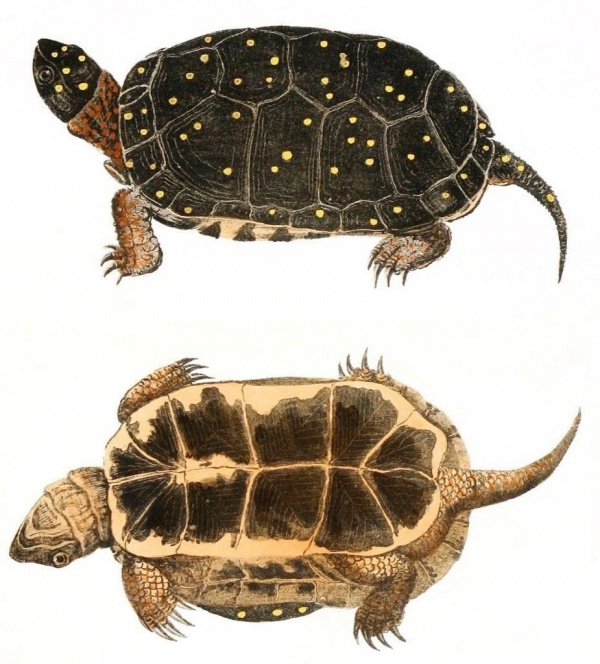Facts About Spotted turtle
The spotted turtle, sole representative of the genus Clemmys, is an endearing small semi-aquatic turtle native to southern Canada and the eastern United States. Its carapace, characterized by yellow spots on a dark background, measures just 8–12 cm in length. Distinguishing between males and females involves examining specific physical traits.
Originally named Testudo guttata, this species is now officially recognized as Clemmys guttata. Recent genetic studies have restructured the classification of related species, but the spotted turtle remains the only species in its genus. This turtle boasts a broad range, extending from southern Maine down to Florida, and westward to central Indiana and Ohio, with isolated populations in Canada and several other states.
Spotted turtles thrive in wetlands, streams, bogs, and marshes, favoring shallow, fresh waters with soft bottoms and abundant aquatic vegetation. As omnivores, they feed on both plants and small animals. They are quite adventurous, spending time on land, laying their eggs there, and going dormant during extreme weather conditions.
Regrettably, the spotted turtle faces significant challenges, particularly in Canada where habitat fragmentation has stranded them in small, isolated groups. They are also threatened by habitat destruction, the pet trade, and vehicular traffic. Conservation efforts are in progress, with the species listed as federally endangered in Canada and under review for protection in the United States.

 Mexico
Mexico